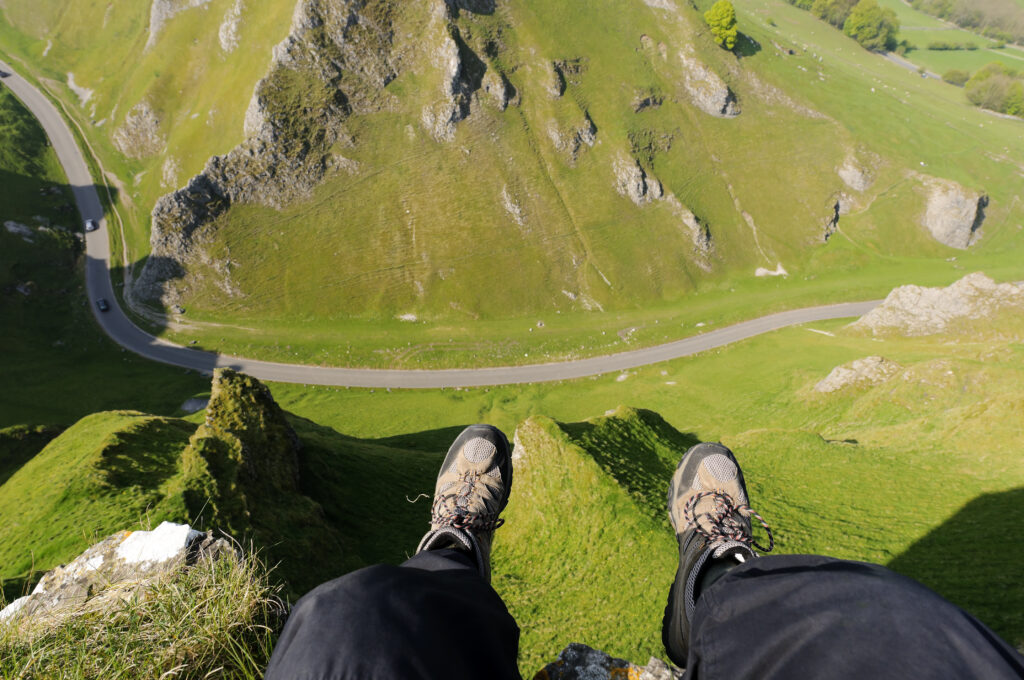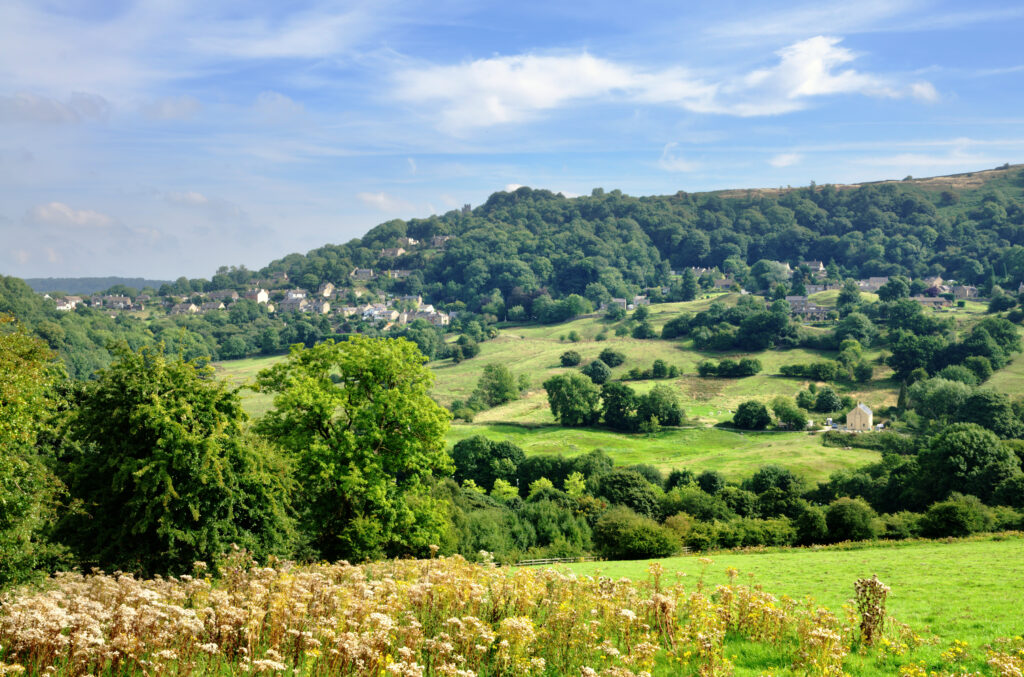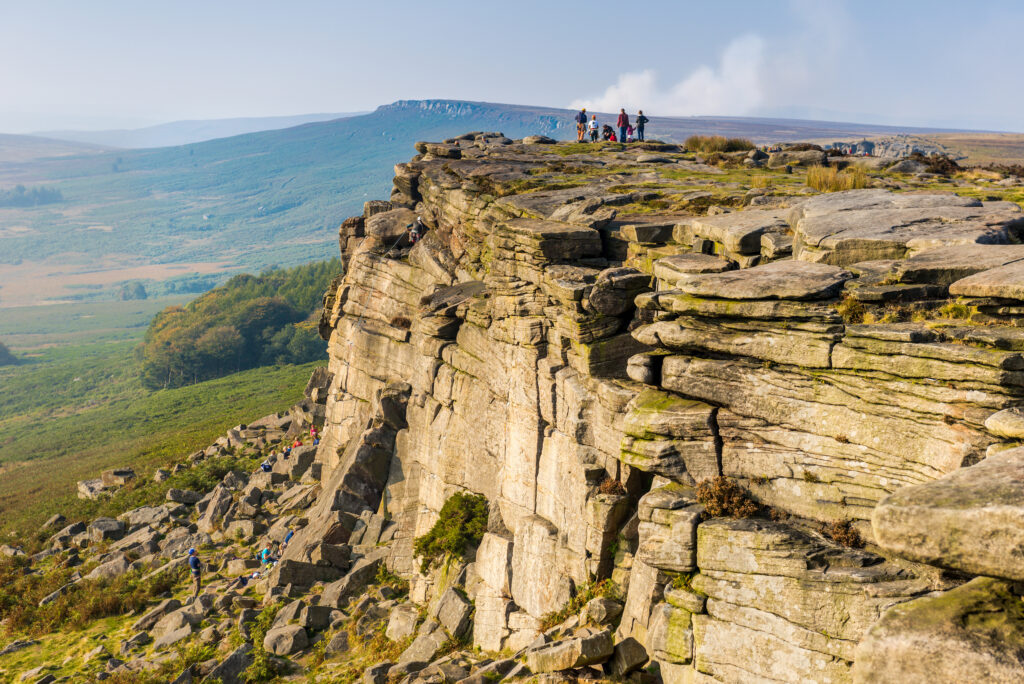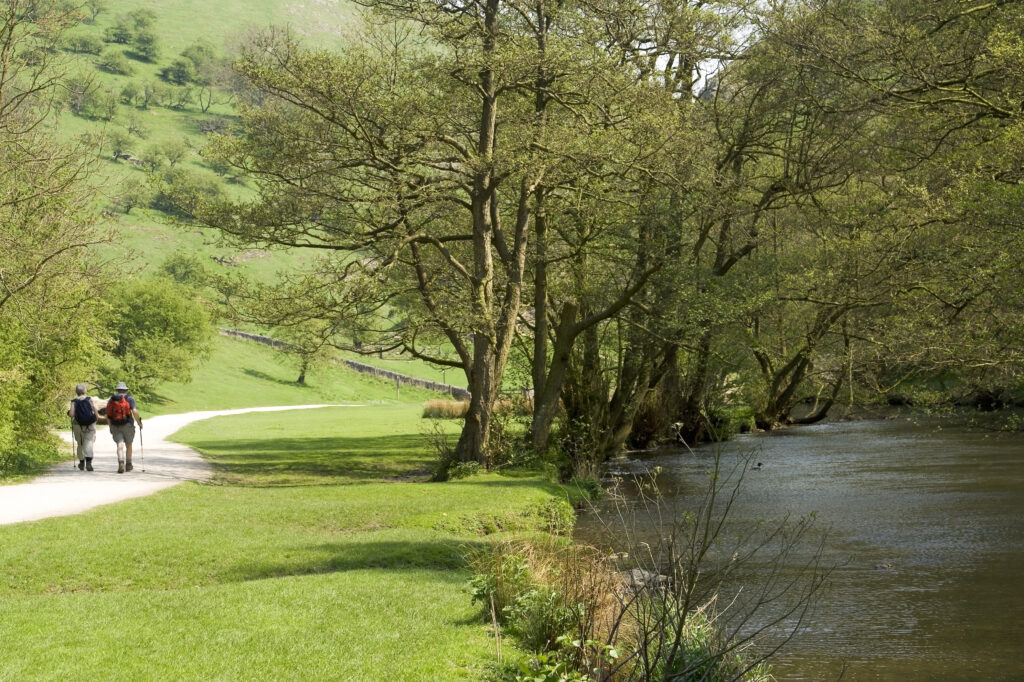The Peak District is famous for its rolling hills and array of enchanting rock formations. With opportunities to explore everything from secret caves in the hills to mystical underground caverns, it comes as no surprise that cave visits are one of the most popular activities for visitors in the Peak District.
Many caves are waiting to be explored in the Derbyshire Peaks, with 4 clustered in the village of Castleton alone and over 30 in the rest of the Peak District. Touring these natural wonders allows visitors to discover rare stones and the distinctive rock formations of each region. On top of this, visitors get the opportunity to learn about the mysterious history of each cave.
While some of the caves require visitors to pre-book a tour, others permit tourists to enter independently without a guide, allowing these explorations to be included as the perfect pit-stop for kids and hikers alike. As well as popular choices such as Robin Hood’s Cave, it is worth considering a visit to some of the lesser-known options that are likely to be less busy, particularly during peak tourist season.
Visiting a cave provides an exciting opportunity to investigate the unique geology of the area, meaning that each exploration is unique. If you’re yet to explore the Peak District caves and are not sure which one to go to, refer to this list to find out which adventure is best suited to you.
1. Speedwell Cavern

Speedwell Cavern is one of the four show caves in the village of Castleton. It sits at the foot of a strikingly steep road called Winnats Pass that connects the Hope Valley to the High Peak.
Speedwell Cavern was opened as a lead mine in 1991, before shutting down after just 20 years of service. A visit to this underground cavern is a magical experience, with visitors descending 106 steps upon entering the cave before boarding a boat at the bottom.
200m below ground level, the boat ride guides visitors through the cave systems and workings of the former lead mine. Eventually, the tour leads to the cavern itself.
There are plenty of picturesque walking routes to explore in the surrounding town of Castleton. Whether you fancy an intense trek up the hill of Mam Tor or a more low-key activity, there is something for everyone.
2. Poole’s Cavern
Famous for its remarkable collection of crystal formations, Poole’s Cavern lies just outside the spa town of Buxton. The cavern has been recognised as the home of the longest stalactite formation in Derbyshire, which is a very impressive claim to fame!
Legend has it that the rock formation is named after an infamous 15th-century fugitive called John Poole, who used the cavern as a base to hide in and to rob unsuspecting travellers from. While this story was met with widespread doubt for many years, a stash of coins from the 1400s was recently discovered which suggests that there is some truth in the old tale of Mr Poole.
Filled with history, the caves were once used as a place of shelter and worship by prehistoric Romans. The visitors’ centre displays neolithic and Roman remains that have been found in the caves over the years.
The majestic main chamber is huge and formed of limestone that has been carved out by an ancient river. The site also houses a cafe and plenty of picnic spots so you can make a day of your adventure.
3. Heights of Abraham

Voted as one of the top places to visit in the whole of the Peak District by Country Life, the Heights of Abraham is an award-winning hilltop park. Located in the popular destination of Matlock, visitors have to reach the caves by a cable car that takes them up to the top of the valley overlooking the town, which immediately transforms the experience into an adventure!
The famous cable car journey offers spectacular views of the Derbyshire Dales while the ticket also grants access to all of the attractions on the top of the hill, including the caverns. The Heights of Abraham has two caverns for you to explore; the Great Masson and the Rutland.
A former lead mine, the Great Masson Cavern is one of the oldest show caves, first welcoming visitors in the Victorian era. Not to be outshone, Rutland Cavern provides an insight into the experiences of 17th-century miners by revealing passages that were chipped away in Roman times.
Along with unearthing the history of local land mining, visitors can also explore the 60-acre estate, adventure playgrounds, guided tours and the Masson Pavilion Film Theatre. What’s more, dogs are invited too and can even travel on the cable cars for free, however, furry friends must sit out on cave explorations as they are not allowed inside the caverns.
4. Peak Cavern
A short journey from the centre of Castleton, Peak Cavern is one of the only naturally-formed caverns in the area and has the largest cave system in the Peak District. Despite these honours, the cavern was originally known by the not-so-sophisticated name ‘The Devil’s Arse’.
This name arose from the crude, flatulent-like noises that can be heard from the cave as the flood water drains away. However, the cavern was renamed and rebranded as ‘Peak Cavern’ in 1880 to avoid causing Queen Victoria any offence during a royal visit.
The original name has made somewhat of a comeback in recent years and has been used to promote the cavern. Peak Cavern hosts many events and concerts during the year, including a mystical candlelit carol concert around Christmas time.
5. Treak Cliff Cavern
Located in Castleton, Treak Cliff Cavern is an active mining spot that continues to process and manufacture ornaments and jewellery from Blue John stone. Treak Cliff Cavern began mining over 300 years ago and is one of the only two sites in the world where Blue John stone can be found.
The cavern itself comprises two sections: the Old Series and the New Series. On top of supplying the perfect souvenirs, Treak Cliff Cavern also has an on-site museum and cafe from which you can enjoy a slice of cake and a hot drink.
The Old Series cave was uncovered by 18th-century lead miners while the New Series was discovered in the 1920s. There is much to see in both sites, with plenty of Blue John in the old section and an abundance of stalagmites, stalagtites and flowstone in the new section.
6. Robin Hood’s Cave

Despite famously offering magnificent views below Stanage Edge, Robin Hood’s Cave is frequently missed by visitors. In fact, the landmark is so hidden and hard to find that it has come to be known as the ‘Secret Cave’.
Located in a remote section of the Lake District near Castleton and Hathersage, Robin Hood’s Cave is carved out of the Stanage Edge escarpment. To enter the cave, you must follow a path on the cliff face which is very difficult to spot and then scramble inside.
Let us reassure you that as soon as you find the entrance, the hardest part of your journey is behind you. The cave is relatively easy to navigate and leads to a stunning gritstone balcony with a 30-metre drop!
7. Thor’s Cave
Thor’s Cave is one of the largest and most spectacular caves that you can visit for free in the Peak District. While there are only 5 miles between Thor’s Cave and the village of Wetton, there is a fantastic opportunity to extend this walk to explore Manifold Valley along the way.
Visitors do not have to book a tour of the cave and are free to explore it at their leisure; something very unusual for a cave of this size. This makes Thor’s Cave a popular choice among tourists so it is advisable to visit during off-peak periods if you want to enjoy the space by yourself.
You can see that the rocks at the entrance of Thor’s Cave have been visibly polished down by the feet of millions of visitors over the years. While this visual record of history is amazing to see it also makes the entrance rather slippery so be sure to wear sensible shoes and enter with caution!
Unbeknownst to many, Thor’s Cave has an impressive claim to fame. It is the face of the OL24 Peak District map – a veritable cave celebrity!
8. Reynard’s Cave

Another hidden gem, the route to Reynard’s Cave is high upon the Derbyshire bank and is not signposted and relatively difficult to find. This cave is located high up on the bank of the Dovedale limestone gorge owned by the National Trust.
The rock formation holds a long history, having been formed by limestone erosion thousands of years ago. Since then, it has been used as a place of refuge by hunters in 13,000 BCE and is said to have been named after a local outlaw who used the cave as his hideaway.
While Reynard’s Cave makes an enchanting place to visit all year round, the bare trees of winter leave it at its most exposed, giving visitors an obstructed view to appreciate the limestone and gritstone rock formations in all their glory.
Decent hiking boots are a must when visiting Reynard’s Cave as the journey to the opening is very steep. However, there are plenty of photo opportunities that will break up the journey plus the view of Dovedale from the cave mouth is well worth the hike.
9. Hermit’s Cave
Hermit’s Cave lies on Cratcliffe Tor, a mere twenty-minute walk from the village of Elton. While iron railings prevent visitors from entering, the mysterious stories surrounding the cave ensure that a trip to see it remains an exciting adventure.
You will see a magnificent four-foot crucifix inside the cave, with a niche for a candle by its side that is estimated to date back to the 14th century. It is thought that the crucifixion was carved in its place strategically to allow the hermit to see it from their sleeping ledge.
While the carving has been vandalised in recent years, the monument still stands in fantastic condition and offers a fascinating sight for any well-meaning walker. With the inside of the cave likely to be dark, it is advisable to bring a torch to avoid missing this magnificent sight.
Summary
The unique and varied landscapes of the Peak District make perfect spots for adventure, especially explorations of caverns. The huge range of caves in Derbyshire offers plenty of exciting geological points of interest, from classic pale-grey limestone to the purple-gold semi-precious mineral, Blue John.
The best thing about visiting the caves in the Peak District is that each one provides a very different experience, with distinctive aesthetics and unique histories. While the caves do provide some much-welcomed shelter from the elements, it is best to consult the weather forecast before heading towards those that involve a hike over intense terrains.
If you’re planning a trip to the Peak District and are looking for places to stay, why not take a look at our range of Peak District self-catering properties.
